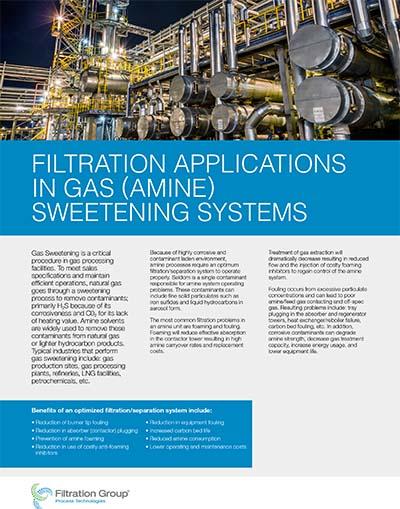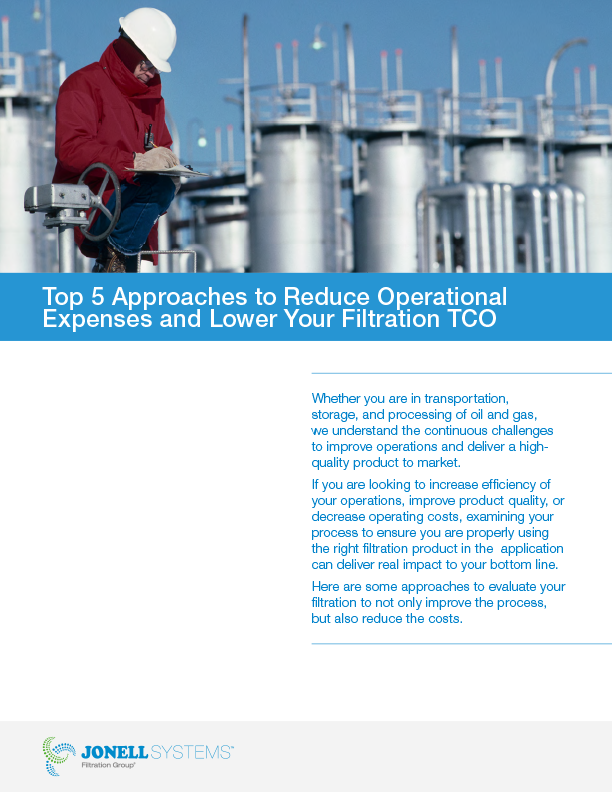
Redefining Amine Reliability: Cotton Filtration as a Technology Platform
Amine treating units remain among the most failure-prone systems in refineries and gas plants, with foaming, corrosion, and solvent losses driving costs and downtime. Traditional filtration approaches—string-wound cotton, polypropylene depth media, and metallic cartridges—were never designed for today’s contamination challenges. Pleated, beta-rated cotton introduces a step change: combining the chemistry of cotton with engineered efficiency, high surface area, and predictable performance. Field results show significant gains in filter life, solvent stability, and equipment protection.
Moving Beyond Legacy Assumptions
Amine system reliability has long been undermined by contaminants—iron, hydrocarbons, degradation products, and fine solids. These destabilize solvent loops, leading to foaming, corrosion, and unplanned losses. Conventional filter designs were never optimized for these realities. Bags, metallic cartridges, and polypropylene elements have been treated as consumables, replaced when plugged, but rarely seen as process safeguards.
Cotton was historically present only in string-wound cartridges. These provided a nominal barrier but with limited efficiency, low capacity, and inconsistent performance. The difference today is that cotton has been re-engineered into pleated, beta-rated cartridges. This innovation transforms filtration from a maintenance task into a reliability lever for solvent health and unit performance.
Media Behavior in Solvent Loops
Polypropylene depth media are widely used and chemically resistant, but their affinity for hydrocarbons creates a vulnerability. In solvent loops where hydrocarbon contamination is expected—whether from upstream entrainment or system upset—polypropylene can hold and concentrate hydrocarbons. Localized saturation at the fiber surface may exceed solvent solubility, creating conditions for foam [2].
Pleated cotton avoids this mechanism. Its hydrophilic surface resists hydrocarbon concentration, while long natural fibers provide inherent strength and low extractables. In beta-rated pleated form, cotton delivers efficiency and solids capacity that string-wounds could not achieve [3].
Metallic cartridges and nominal bags address durability, but their limited surface area constrains dirt-holding capacity. The result is early plugging, higher flux, or bypass—leaving solvent loops exposed to contamination.
Field Outcomes in Operation
Field experience confirms how media choice reshapes reliability. In a large Middle Eastern refinery amine unit using MDEA, pleated cotton cartridges achieved more than five times the service life of metallics and reduced fouling in downstream exchangers. In another case involving a hot carbonate system, polypropylene depth filters were replaced with pleated cotton, more than doubling filter run length and reducing foam-related disturbances.
The economic impact is clear. By limiting foaming, pleated cotton reduces amine carry-over and solvent loss, cuts antifoam consumption, and preserves solvent stability. By controlling solids, it prevents exchanger fouling and lowers the frequency of maintenance interventions. Reliability improves not by chance, but because contamination is managed at the filtration stage.
Corrosion, Safety, and Asset Integrity
Contamination is also the root of corrosion, one of the costliest risks in amine service. API 571 identifies amine corrosion as a major damage mechanism in refining. Heat exchangers, contactors, and reboilers represent significant capital; extending their life through better contaminant control avoids replacement costs, defers turnarounds, and reduces downtime.
The safety implications are equally important. Corrosion can lead to leaks and H₂S release, while foam-driven absorber instability risks off-spec product and environmental excursions. By stabilizing solvent chemistry and limiting particulates, pleated cotton filtration contributes directly to safer, more reliable operation.
Industry Direction
Across industry forums and technical papers, a consistent trend is emerging. Filtration is being specified upstream of absorbers rather than left as a downstream polish. Sizing is increasingly based on solids load and flux rather than nominal micron cut. Differential pressure is being treated not only as a maintenance signal but as a process diagnostic [4].
Within this shift, pleated cotton stands out as more than an incremental improvement. It is a technology platform aligned with broader goals of preventive reliability, safety, and sustainability.
The Way Forward
Amine treating no longer has to accept foaming, corrosion, and solvent loss as unavoidable. With pleated, beta-rated cotton media, filtration becomes a designed-in safeguard that stabilizes solvent performance and protects high-value assets. The benefits extend across cost, reliability, and compliance: reduced amine losses, lower antifoam use, minimized solvent disposal, deferred equipment replacement, and fewer safety incidents. Environmental impact is reduced as well, through longer filter life, less waste, and improved energy efficiency in regenerators.
The message is clear: filtration is not a cost center. It is an innovation in reliability, safety, and sustainability.


Discuss your Application Today!

Get in touch with Jonell Systems, a part of Filtration Group, to find out more about how our filtration solutions can help you solve your filtration and separation challenges in Oil & Gas applications.
References
1. Norton, Amine Operating and Troubleshooting Tips from an “Old Geezer”, LRGCC Proceedings, 2017.
2. Foaming in Amine Systems, Independent troubleshooting session notes, 2010.
3. Amine System Fundamentals, LRGCC Proceedings, 2013.
4. Amine Reliability Symposium Proceedings, Industry symposium papers, 2019.
5. Technical Bulletin: Pleated Cotton Filter Cartridges for Solvent-Based Acid Gas Removal (Energy Market), Jonell Systems, 2025.
Further reading
For detailed specifications, comparative advantages of pleated cotton versus polypropylene, metallics, and string-wounds, and application guidance across refinery and gas-treating units, refer to the full Technical Bulletin: Pleated Cotton Filter Cartridges for Solvent-Based Acid Gas Removal (Energy Market) [5].
